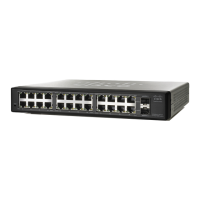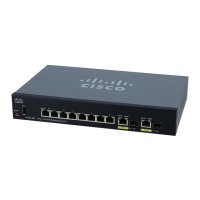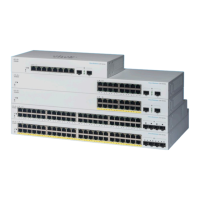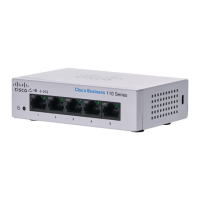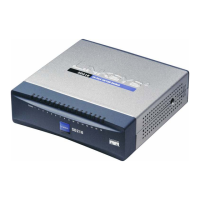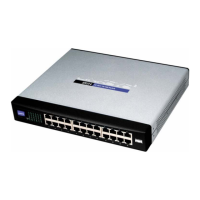Administration: Time Settings
Configuring System Time
Cisco Small Business 200 Series Smart Switch Administration Guide 75
7
• Poll Interval—Select to enable polling of the SNTP server for system time information. All NTP
servers that are registered for polling are polled, and the clock is selected from the server with the
lowest stratum level (distance from the reference clock) that is reachable. The server with the lowest
stratum is considered to be the primary server. The server with the next lowest stratum is a secondary
server, and so forth. If the primary server is down, the device polls all servers with the polling setting
enabled, and selects a new primary server with the lowest stratum.
• Authentication—Select the check box to enable authentication.
• Authentication Key ID—If authentication is enabled, select the value of the key ID. (Create the
authentication keys using the SNTP Authentication page.)
STEP 6 Click Apply. The STNP server is added, and you are returned to the main page.
Configuring the SNTP Mode
The device can be in active and/or passive mode (see SNTP Modes for more information).
To enable receiving SNTP packets from all servers on the subnet and/or to enable transmitting time
requests to SNTP servers:
STEP 1 Click Administration > Time Settings > SNTP Multicast/Anycast.
STEP 2 Select from the following options:
• SNTP IPv4 Multicast Client Mode (Client Broadcast Reception)—Select to receive system time IPv4
Multicast transmissions from any SNTP server on the subnet.
• SNTP IPv6 Multicast Client Mode (Client Broadcast Reception)—Select to receive system time IPv6
Multicast transmissions from any SNTP server on the subnet.
• SNTP IPv4 Anycast Client Mode (Client Broadcast Transmission)—Select to transmit SNTP IPv4
synchronization packets requesting system time information. The packets are transmitted to all SNTP
servers on the subnet.
• SNTP IPv6 Anycast Client Mode (Client Broadcast Transmission)—Select to transmit SNTP IPv6
synchronization packets requesting system time information. The packets are transmitted to all SNTP
servers on the subnet.
STEP 3 Click Apply to save the settings to the Running Configuration file.
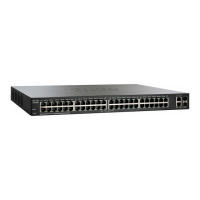
